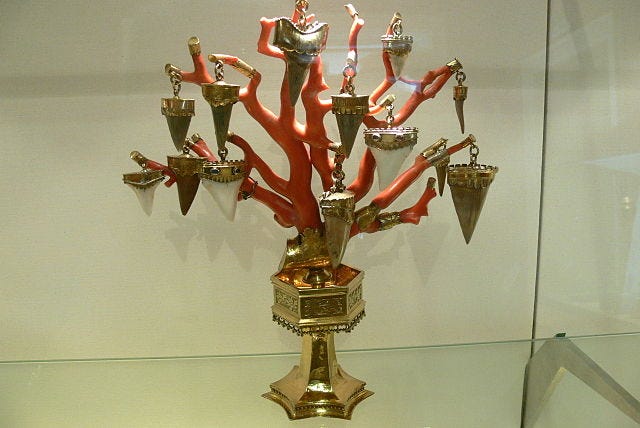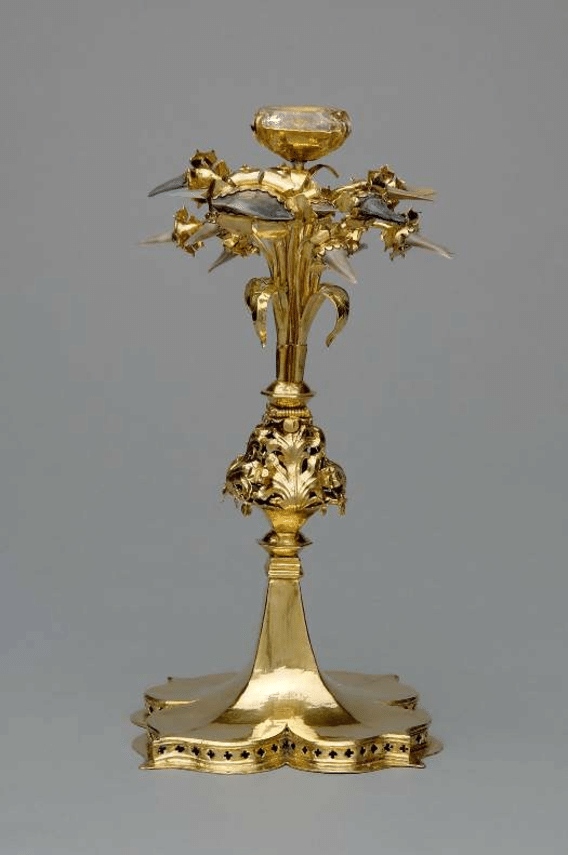I’m in the British Library this week researching medieval poisonings for my next novel in the Trobairitz Sleuth series.
Fear of poisoning was rampant in this period. Between 500 and 1500, 342 cases of poisoning are recorded in surviving documents and there would have been many more. Orderic Vitalis records 17 cases of poisoning in his chronicle covering the 11th and 12th centuries.
One of the most fascinating aspects of poison in the Middle Ages is the means used to guard against it. Languiers were created by goldsmiths as table decorations with a vital function.

Languiers were tree-shaped, fashioned from gold or coral, with ‘serpents’ tongues’ suspended on them. The serpents’ tongues were actually fossilised sharks’ teeth. They could be removed from the tree and dipped in food or drink. If there was poison present the tongue was expected to sweat and change colour. The confusion between serpents’ tongues and sharks’ teeth probably relates to the biblical story that Saint Paul was bitten by a serpent in Malta and the teeth/tongues mainly came from Malta. In the Middle Ages, exotic animals were often confused with mythical beasts from the bestiaries and were related to moral tales.
Unicorn horn (actually narwhal or rhino horn) was also believed to be efficacious as a test for poisons. Food, drink, letters, gloves, saddles were all recorded as being poisoned. Rival doctors or rival artists might poison each other. Unhappy wives might poison their husbands. The powerful might poison their opponents. A ‘serpent’s tongue’ or a ‘unicorn horn’ could also be worn in an amulet. Consuming quantities of onions, garlics, treacle or a mysterious substance called theriaque might work as a remedy.
The oldest record of a languier is in the inventory of Odo, count of Nevers, in 1266. In 1295, Pope Boniface had fifteen languiers. They appear in many inventories in the 14th and 15th centuries. However, there are only three surviving now, in museums in Vienna and Dresden.

Trobairitz Sleuth Book 2: Salt’s Wound is out later this year. The first book in the series is Love’s Knife.
Sources
Collard, F. (2008). The crime of poison in the Middle Ages, trans. D. Nelson-Campbell. Greenwood Publishing.
Levenson, J. A., ed. (1991). Circa 1492: Art in the Age of Exploration. National Gallery of Art and Yale University Press, pp. 129–130.
Stein, C. (2021). Medieval naturalia: Identification, iconography, and iconology of natural objects in the late Middle Ages. Medievalista Online, 29, 211-241. https://doi.org/10.4000/medievalista.3902




Super interesting Tracey! Who knew that this practice existed? Treacherous times!
I’m enjoying you book but I’m slow! On holidays at the moment for our 50th anniversary. I hope to have it finished by end of May.